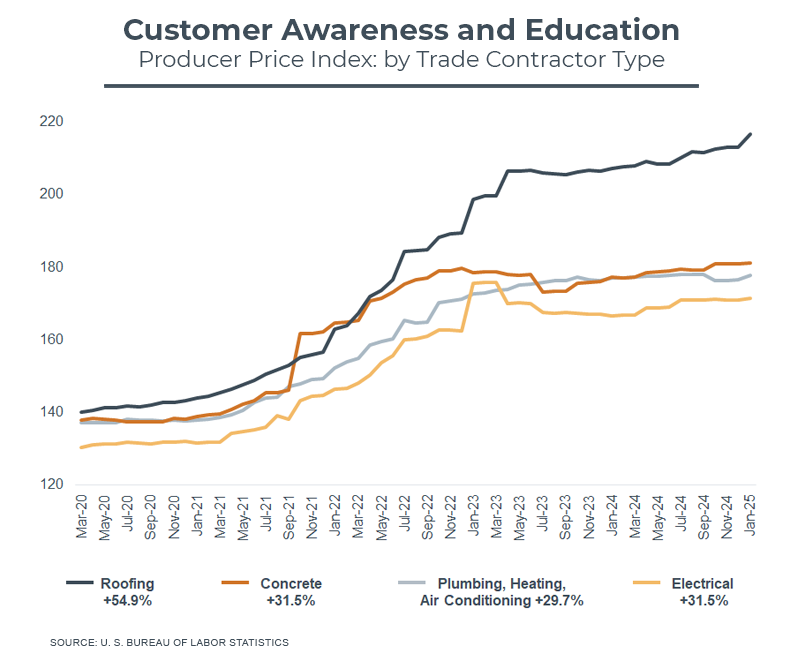Educate Your Customers on the Risk of Supply Chain Disruptions

Even our best repeat customers likely do not know exactly what affect tariffs, price escalation, and supply chain disruption will have on their capital programs, construction projects or contractor partners. This is likely true for both end-user owners and even some general contractors.
We have yet to see the full impact of current tariff policies on construction, but the effects of inflation during the COVID-19 pandemic were striking. From March 2020 through January of 2025, input costs of running a trade contractor business increased by 30% to more than 50%.

The cost of your customers’ projects rose dramatically, too. The cost to build a new school increased more than 30%, and the cost to build a light industrial warehouse is up more than 40%.

Remember that the projects your organization wins are your customers’ projects, not yours. At its core, your contracting company is in the business of building great projects.
You are not and should not be required to be an expert in financial futures for construction commodities or complex manufacturing and distribution supply chains. Those are different businesses with different expertise. Nor are you singularly responsible for selecting the timing or full scope of your customers’ projects.
The full risk of material price escalation and potential equipment delays should not be borne by your company.
It is, however, our responsibility to educate our customers on the risks and the potential impacts to their projects – and to help them mitigate those risks.
To be successful, winning the right work and executing it well, our customers or general contractor partners need to understand the risks and costs of their projects. The risks are changing. Costs are increasing. We need partners with a shared understanding of this new construction environment.
What Contractors Should Do: Playing Offense Instead of Defense
- Schedule check-in calls, both pre-award and on active projects, with your customers.
- Create an annual marketing plan that includes goals for routine customer touches, especially for your repeat customers and partners.
- Don’t assume that your end-user owner or general contractor has full awareness of the challenges your business and your teams are currently facing (e.g., your costs, labor availability, pricing, lead times).
- Inform customers of typical lead times and price increases that you see today and the risks of future changes to their projects and to your business.
- Ask questions to uncover your customer’s business case for the project.
- Drive early alignment on ownership of increased schedule and budget risk, using both the contract and collaborative conversations.
Our remaining blog posts in this series will include the following additional strategies for managing price escalation and supply chain disruption and what to do in your business:
- Tightening your project selection criteria and estimate review process
- Aligning contract clauses with owners to share risk
- Planning your projects to mitigate supply chain risk
- Stopping supply chain risks from impacting the field
If you would like to discuss specifics about your own supply chain challenges in relation to tariffs or other disruptions, please don't hesitate to reach out to me or another member of our team.



